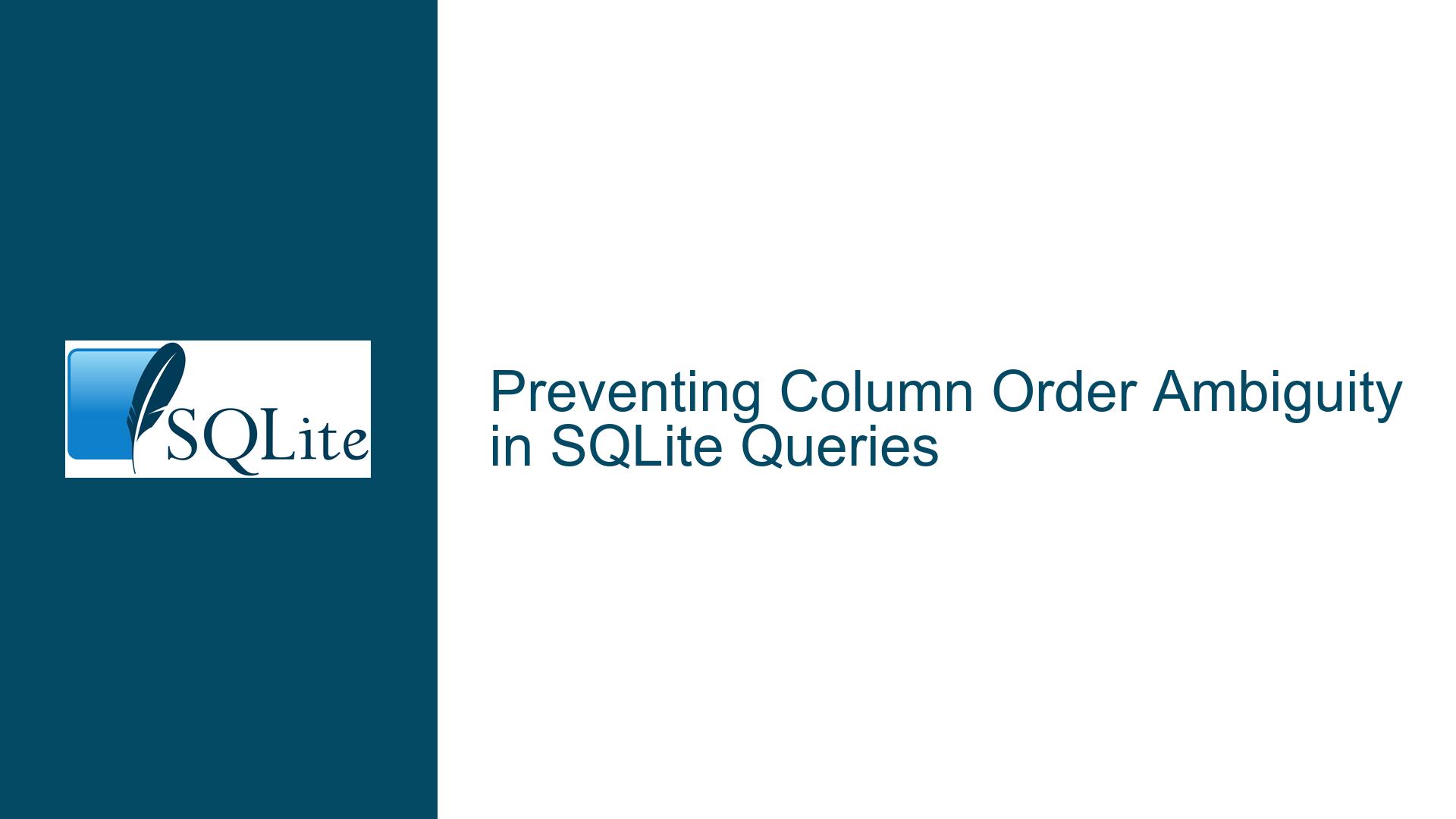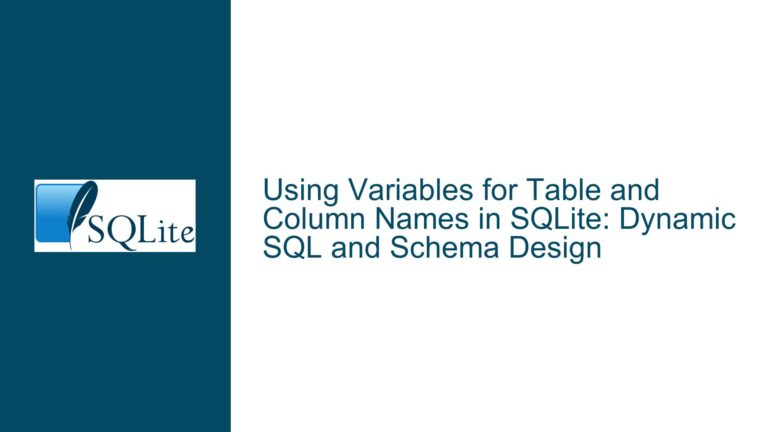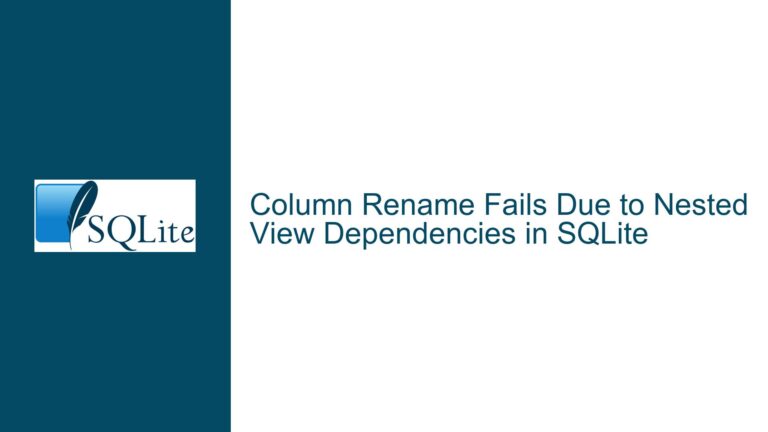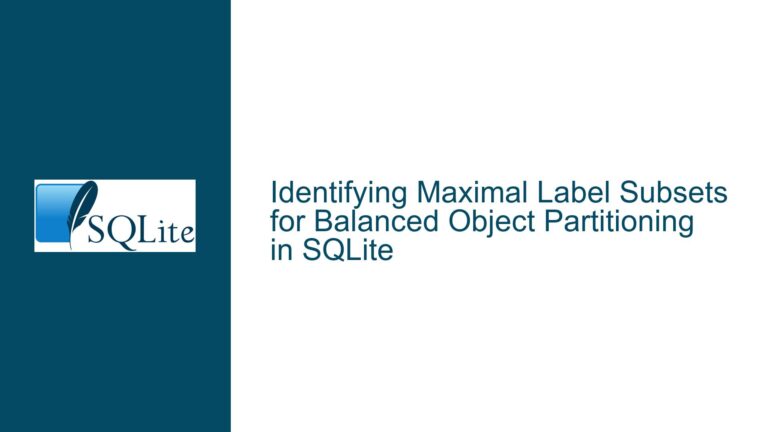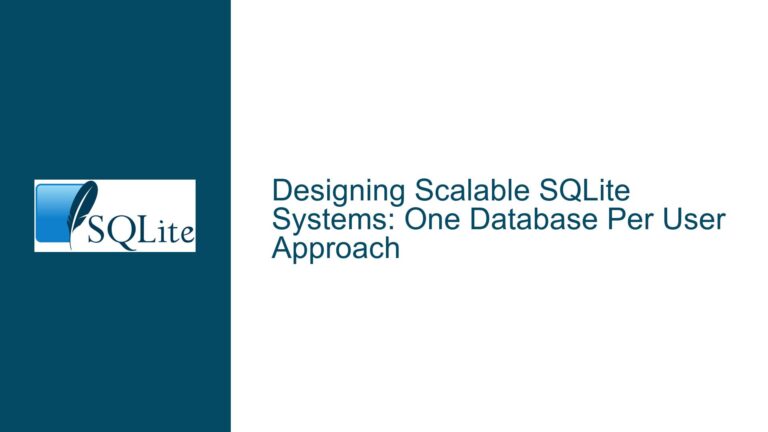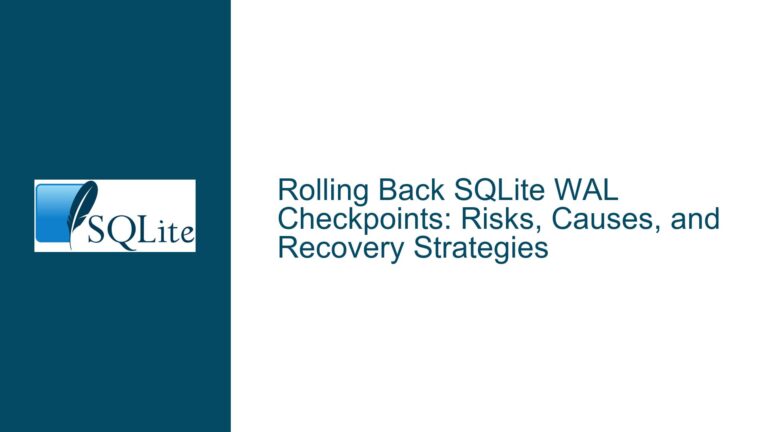Preventing Column Order Ambiguity in SQLite Queries
The Risks of Unspecified Column Selection in SQLite
When working with SQLite, one of the most common pitfalls developers encounter is the reliance on unspecified column selection, typically through the use of the SELECT * syntax. This practice, while convenient during initial development or debugging, can lead to significant issues in production environments. The core of the problem lies in the implicit assumptions about column order and naming that SELECT * introduces. When a query does not explicitly specify the columns to be retrieved, the database engine returns all columns in the order they were defined in the table schema. This behavior, while predictable, becomes problematic when the schema evolves over time, such as when new columns are added or existing ones are modified.
The issue is further compounded by the fact that SQLite, like many relational databases, adheres to the SQL standard, which mandates that column names returned by a query must match the names defined in the schema unless explicitly aliased. This means that any application code relying on the order or names of columns returned by a SELECT * query is inherently fragile. If the schema changes, the application may break or produce incorrect results, even if the underlying data remains valid. This fragility is particularly acute in large codebases or distributed systems where schema changes may not be immediately reflected in all parts of the application.
Moreover, the use of SELECT * can obscure the intent of a query, making it harder for other developers (or even the original author) to understand what data is being retrieved and why. This lack of clarity can lead to subtle bugs, especially when queries are reused or modified over time. For example, a query that initially retrieves only a few columns might later be expanded to include additional ones, but without explicit column names, it becomes difficult to track which columns are actually needed by the application.
SQL Standard Compliance and Column Naming Constraints
The SQL standard imposes strict requirements on how column names are handled in query results. Specifically, if a column in the result set corresponds to a column in a table and the column name is unambiguous, the result set must use the bare column name unless an alias is explicitly provided using the AS clause. This requirement ensures that the names of columns in the result set are predictable and consistent, which is crucial for interoperability and compatibility across different database systems.
In the context of SQLite, this means that any attempt to obfuscate or randomize column names in the result set would violate the SQL standard. While it might be tempting to introduce a pragma or other mechanism to shuffle column names or change their order as a way to discourage the use of SELECT *, such a feature would be non-compliant with the standard and could lead to confusion or errors in applications that rely on predictable column naming.
The standard also does not mandate a specific order for columns returned by a SELECT * query, although most database implementations, including SQLite, return columns in the order they were defined in the table schema. This behavior is generally consistent and predictable, but it is not guaranteed by the standard. As a result, applications that rely on the order of columns returned by SELECT * are inherently fragile and may break if the schema changes or if the query is executed on a different database system that uses a different column ordering strategy.
Best Practices for Explicit Column Selection and Schema Management
To mitigate the risks associated with unspecified column selection, developers should adopt a disciplined approach to query construction and schema management. The most effective strategy is to always specify the columns to be retrieved in a SELECT query, rather than relying on SELECT *. This practice ensures that the query is explicit about the data it needs, making the code more readable, maintainable, and resilient to schema changes.
When writing queries, it is also important to use meaningful column aliases where appropriate, especially when dealing with computed columns or joins that might result in ambiguous column names. By providing explicit aliases, developers can ensure that the names of columns in the result set are clear and unambiguous, reducing the risk of errors or confusion in the application code.
In addition to careful query construction, developers should also adopt robust schema management practices. This includes using version control for database schemas, documenting schema changes, and thoroughly testing applications after any schema modifications. By treating the database schema as an integral part of the application codebase, developers can ensure that schema changes are properly tracked and that the application remains compatible with the current schema.
Another useful practice is to use database constraints and data validation rules to enforce data integrity and prevent invalid data from being inserted into the database. For example, using NOT NULL constraints, unique indexes, and foreign key constraints can help ensure that the data in the database remains consistent and valid, even as the schema evolves over time.
Finally, developers should consider using tools and frameworks that support schema migration and versioning. Many modern ORMs (Object-Relational Mapping tools) and database migration frameworks provide features for managing schema changes, such as generating and applying migration scripts, tracking schema versions, and rolling back changes if necessary. By leveraging these tools, developers can streamline the process of managing schema changes and reduce the risk of introducing errors or inconsistencies into the database.
In conclusion, while the use of SELECT * may seem convenient, it introduces significant risks and should be avoided in production code. By adopting best practices for explicit column selection and schema management, developers can build more robust, maintainable, and reliable applications that are resilient to schema changes and other potential issues.
